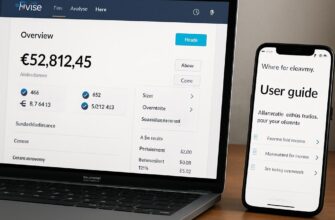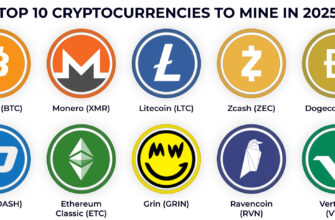Starting a company is always part art, part arithmetic, and part stubbornness. In 2026 the landscape will look familiar in some ways and surprisingly different in others — new regulatory attention, evolving funding dynamics, and talent distributed across time zones. This article sketches a practical, step-by-step approach to get from idea to traction, with concrete actions you can take in the first 90 days. Read this as a field guide you’ll return to while you build.
- Why 2026 matters — what’s new, what’s steady
- Validating your idea quickly
- Building an MVP and iterating fast
- Finding early customers
- Funding sources and capital strategy
- Choosing the right legal structure
- Taxes, incentives, and financial housekeeping
- Protecting IP and handling privacy
- Hiring, remote work, and culture
- Go-to-market channels that scale
- Operations, vendors, and tooling
- Metrics, runway, and a 90-day checklist
Why 2026 matters — what’s new, what’s steady
Expect investors and customers to be pickier about unit economics and real revenue. After years of easy money, the pendulum swung toward rational capital allocation, which means founders must demonstrate sustainable growth early. That reality favors teams who obsess over LTV, CAC, and churn while staying creative about inexpensive validation methods.
At the same time, tools that reduce build time are better than ever: generative AI, low-code platforms, and cloud infrastructure let you test product hypotheses faster. Regulatory scrutiny — especially around data, AI behavior, and fintech — will be more pronounced, so design for compliance from day one. These twin pressures make speed and discipline your competitive advantage.
Validating your idea quickly
Start by writing the one-sentence problem you solve and the one group of customers who care most. Then get on the phone with ten potential customers; ask about their workflows and what they’d pay, not whether they like your product. Those conversations separate interesting concepts from revenue-ready problems faster than a draft pitch deck ever will.
Use landing pages, simple ad tests, or concierge prototypes to collect micro-commitments — email signups, calendar bookings, or preorders. If a paid pilot or deposit is possible, pursue it; nothing replaces real purchasing intent. The goal is to market-test before you build, reducing wasted engineering cycles and proving a path to revenue.
Building an MVP and iterating fast
An MVP is a learning machine, not a polished product. Build just enough to validate a core value exchange: identifiable user, clear action, measurable outcome. Keep feature scope tight and instrument everything so you can measure behavior instead of guessing.
Ship frequently and treat each release as an experiment with a single hypothesis and success metric. Use feature flags, analytics, and short feedback loops to iterate without breaking customer trust. When you prioritize ruthlessly, you stay nimble and can pivot before your burn rate forces a painful decision.
Finding early customers
Early customers rarely arrive through paid ads alone; they come from networks, niche communities, and direct outreach. Identify three channels where your buyers spend time and test each with a small budget and clear conversion goal. Community-building — forums, Slack groups, niche newsletters — often yields higher-quality early adopters than broad campaigns.
Work the pilot sale: propose a short-term trial with clear success criteria and a refundable fee or small commitment. Use pilot results to create case studies and testimonials that fuel sales in adjacent accounts. Remember that the first ten customers teach you more about product-market fit than any investor meeting.
Funding sources and capital strategy
Figure out whether you need outside capital at all; many startups in 2026 will be better off with a revenue-first approach or non-dilutive options. If capital is necessary, layer your strategy: founders’ savings, angel checks, strategic corporate pilots, and then institutional rounds. Fundraising should align with milestones, not timelines — raise for a specific set of outcomes that increases valuation.
Alternative financing tools — revenue-based financing, grants, and convertible notes — remain useful when used selectively. Accelerators and corporate programs can provide valuable distribution and credibility, but weigh equity terms and time commitments carefully. A lean cap table with aligned investors makes board dynamics simpler when growth accelerates.
Choosing the right legal structure
Most fast-scaling startups still opt for a Delaware C-corporation because it’s familiar to VCs and eases equity issuance. That said, smaller teams or revenue-first ventures may benefit from LLC structures early on for tax flexibility and lower administrative burden. Choose intentionally, and consult a startup-savvy attorney — changing structure later is possible but costly.
Set clear founder agreements up front: vesting schedules, equity splits, IP assignment, and dispute resolution clauses. Those documents protect you during emotional moments and make future fundraising smoother. Legal hygiene in the early days reduces risk and keeps the team focused on product and customers.
| Entity | Pros | Cons |
|---|---|---|
| Delaware C-corp | VC-friendly, easy equity issuance, established corporate law | Double taxation if not careful, more admin, higher costs |
| LLC | Tax flexibility, simpler administration, good for small founders | Less familiar to institutional investors, harder to issue standard stock |
Taxes, incentives, and financial housekeeping

Set up your accounting and bank accounts on day one so you have clean books when you talk to investors or apply for grants. Use an accountant familiar with startups to advise on R&D tax credits and state incentives; those programs can materially extend runway. Automate payroll and expenses early to avoid a bookkeeping mess later.
Keep a conservative cash plan and a clear burn multiple — how many dollars of net new ARR you buy with each dollar of spend. Investors will ask these questions, and more importantly, you’ll make smarter decisions when you treat every dollar as scarce. Clear financial reporting builds investor trust and prevents surprises as you scale.
Protecting IP and handling privacy
File the right IP protections early: provisional patents if your invention is novel and strategic, copyright for content, and trade secret practices for processes. More often, strong contracts that assign IP from contractors and employees to the company are the most important first step. Don’t assume ownership; document it.
Privacy law will influence product design: have a privacy-first mindset if you collect personal data, and map your data flows before building features. Familiarize yourself with state rules like the California Consumer Privacy Act and consider global privacy implications if you plan to serve customers overseas. Simple, transparent privacy notices and sensible data minimization go a long way toward compliance and trust.
Hiring, remote work, and culture
Talent markets remain tight; differentiate with clear missions, flexible work arrangements, and realistic compensation packages that include equity. Hire for outcomes, not hours, and create a strong onboarding process so remote hires are productive quickly. Small teams benefit from clear role boundaries and shared ownership of KPIs.
Culture is a set of habits, not slogans. Define three non-negotiable behaviors that reflect how you want decisions made and conflicts resolved. In my experience advising early teams, those simple, repeatable practices prevent miscommunication and keep momentum during the inevitable hard weeks.
Go-to-market channels that scale
Match your motion to your customer: product-led growth works well when adoption is self-service and value is immediate, while enterprise sales is necessary for high-touch, high-contract-value deals. For many startups, a hybrid approach — self-serve core with strategic account play — is the most pragmatic path. Test both modes quickly to learn which yields lower CAC and higher retention.
Content and community remain powerful and low-cost if you invest consistently. Publish case studies, run live demos, and partner with complementary platforms to reach audiences at scale. Paid channels can accelerate acquisition, but only after you’ve nailed onboarding and early retention.
Operations, vendors, and tooling

Build an operational backbone with a few reliable vendors for cloud hosting, payments, and security. Negotiate founder-friendly terms early and keep vendor contracts under active review as you scale. Avoid vendor sprawl — fewer, well-integrated tools reduce context switching and technical debt.
Implement basic security practices from day one: multi-factor authentication, encrypted backups, and least-privilege access control. Security isn’t just compliance theater; it protects customer trust and your business continuity. Outsource to specialists where appropriate, but maintain internal ownership of critical decisions.
Metrics, runway, and a 90-day checklist
Measure the few metrics that matter: monthly recurring revenue (MRR), net dollar retention, CAC, LTV, churn, and runway in months. Track these weekly in a simple dashboard and update forecasts monthly as new data arrives. Investors and partners want a coherent story backed by numbers, not hypothetical growth curves.
Here’s a focused 90-day checklist to move from idea to validated traction:
- Conduct 10 customer discovery interviews and document findings.
- Launch a landing page with a clear value proposition and signup funnel.
- Build an MVP that validates one core hypothesis.
- Set up legal entity, bank account, and basic accounting.
- Secure IP assignment agreements and basic privacy documentation.
- Acquire first three pilot customers or get paid commitments.
- Put financial controls in place and model burn vs. runway.
- Hire one key early teammate or contractor to scale core work.
These steps are neither glamorous nor guaranteed, but they create momentum and learning. Startups win by reducing uncertainty quickly and compounding small wins into larger ones. Keep the cadence steady and celebrate clarity over vanity metrics.
Launching a startup in the US in 2026 will demand speed, fiscal discipline, and thoughtful attention to regulation and customer needs. If you focus on validated learning, clean legal and financial foundations, and a repeatable go-to-market engine, you’ll increase your odds of building something lasting. For more practical guides and timely analysis, visit https://news-ads.com/ and explore our other materials tailored to founders and early-stage teams.







